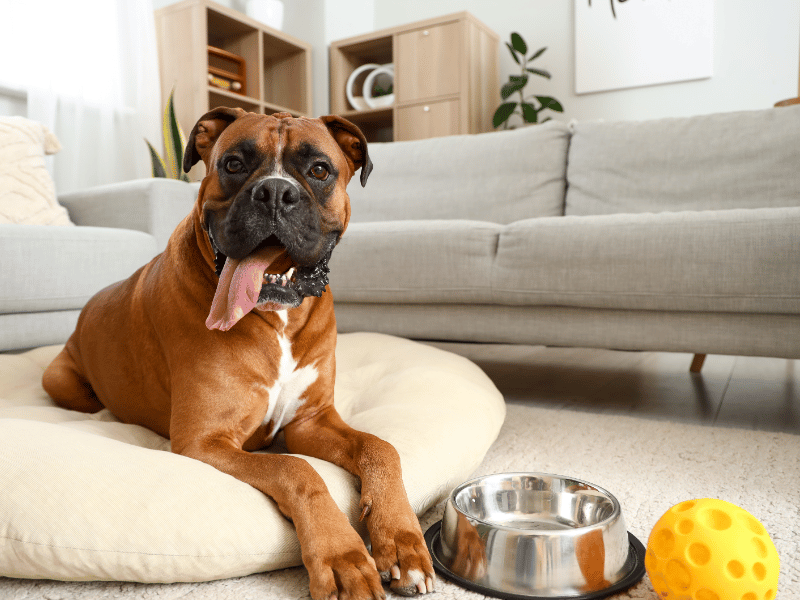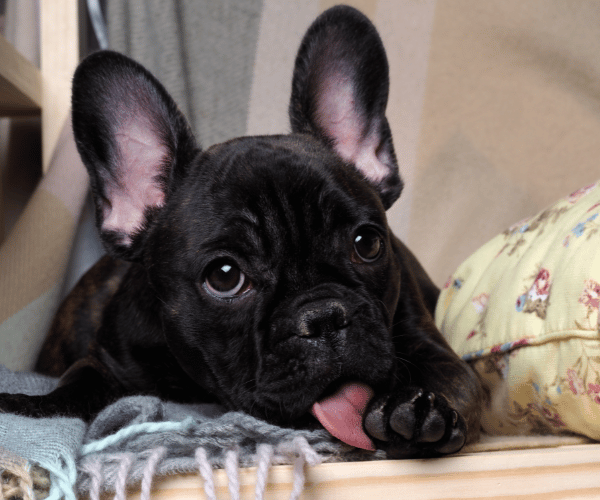Do Tear Stains Mean My Dog Is Sad?
When you look at your pup, do their tear-stained eyes make you think they're sad? While your fur babies have the ability to feel sadness, those stains aren't the result of heavy emotions.
There are actually many reasons why your doggo may show tear stains. From diet to allergies, tear stains are a common issue among certain breeds, like English Bulldogs, Pugs and French Bulldogs.
In this blog post, we'll explain what tear stains are and why they occur, as well as discuss methods for preventing and treating them. Read on to find out more!

In case you didn't know: dogs have three eyelids. One of which has the job of spreading a ‘precorneal’ layer across the eye to protect against bacteria. Too much precorneal fluid is what causes a build-up and – you guessed it – the dog tear stains.
Tear staining is more commonly seen in smaller dogs with short muzzles like English Bulldogs, Pugs and French Bulldogs. This is because these breeds have shorter tear ducts that can easily get plugged up or become irritated. As a result, tears overflow from their eyes instead of draining into the nose properly.
Some other brachycephalic breeds that are susceptible to dog tear stains are:
- Shih-Tzu
- Maltese
- Pekingese
- Lhasa Apso
- Chihuahua
- Chow Chow
- Bull Mastiff
- Boxers
- Cavalier King Charles Spaniel
- Boston Terrier
Tear staining can also occur from other causes, including clogged tear ducts, allergies, infections or excessive tearing. It's also possible that your pup may be sensitive to the ingredients in their food or environment. Be sure to consult your vet if you believe any of these factors might apply to your pup.
How Can You Care for Your Dog's Tear Stains?
When it comes to caring for your pup's tear stains, prevention is often the best form of treatment. If you’re worried about tear staining on your dog, start by keeping their fur trimmed around the eyes and wiping away excess tears with a damp cloth several times a day. This will help keep the area clean and reduce the amount of staining that occurs.
You should also be sure to feed your pup a balanced diet and limit their access to allergens like dust, pollen or molds. Additionally, if you think that environmental factors are causing the tear staining on your pup, make sure they aren't spending too much time outdoors in direct sunlight or windy conditions.
Using a specially formulated wrinkle paste or a topical solution can also help reduce tear staining. These products are designed to gently clean the area and break down the build-up of tear stains without causing irritation.
Luckily, here at Squishface, we have our specially-formulated Wrinkle Paste.
Made in the US with natural ingredients and minerals such as zinc oxide, shea butter, coconut oil and avocado oil, your pup will have a gleaming and shiny coat in no time.
The Squishface Wrinkle Paste is an antibacterial and anti-fungal paste used around the eyes to clean up stains while helping to prevent the re-occurrence of fungal or bacterial infections. Not only this, but the zinc oxide forms a naturally water-repellent barrier so there’s no need to reapply after a splash in that puddle. The puddle you specifically said ‘no’ to in your stern puppy voice.
The Bottom Line
Tear stains are fairly common and, in most cases, aren't caused by emotions but rather allergies, infections or clogged tear ducts. To help keep your pup's eye area clean and reduce tear staining, make sure to trim the fur around the eyes regularly and wipe away any excess tears with a damp cloth. Additionally, feed your pup a balanced diet and limit their access to allergens if possible. If necessary, consult your vet for more aggressive treatments such as medications or surgery.
For more tips, tricks, and all things Squishface, don’t forget to visit the blog every week!











